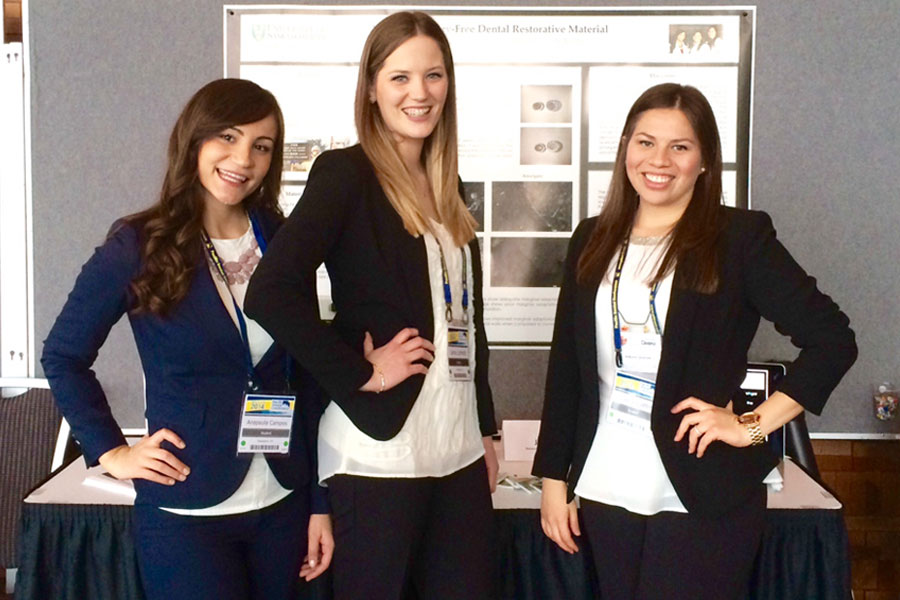Mercury-free research
Research by three students in the U of S College of Dentistry may lead to a new mercury-free material for filling teeth.
By Kris Foster The novel amalgam that fourth-year students Anapaula Campos, Kellyana Quattrini and Jenna Schmitt have been working on since their first year in the college, replaces the mercury found in traditional amalgams with a silver solution and ceramic nanoparticles.
The novel amalgam that fourth-year students Anapaula Campos, Kellyana Quattrini and Jenna Schmitt have been working on since their first year in the college, replaces the mercury found in traditional amalgams with a silver solution and ceramic nanoparticles.
"When we started the research program we had to come up with a topic," said Campos. "We tossed around a few ideas and decided to look at mercury-free amalgam."
With the help Dr. Azita Zerehgar, assistant professor of pediatric dentistry, and Assem Hedayat, assistant professor of dental materials, the group set out to see if they could come up with a material that was long lasting and had amalgam's strength but was mercury free.
"Amalgam is tried, tested and true," said Campos. "It's been used for many years, but there is such a negative public perception of mercury-based amalgams even though there are no harmful side effects."
The group did a literature review and then used Hedayat's expertise in materials science to come up with potential mercury replacements.
"We helped him figure out what kind of material we needed and he came back to us with a silver solution and ceramic nanoparticles. We then had to figure out what the right mixture and consistency were that would work for a filling."
With that determined, Campos, Quattrini and Schmitt went to the college's tooth bank to get teeth on which to test their new material, using the standard dental filling practice.
Once the teeth were filled, they were "thermally cycled" to simulate the oral environment, explained Campos. This means they were repeatedly immersed in hot and cold water.
The tested teeth were then cross-sectioned and examined under an electron microscope. What the images revealed was surprising to the research team.
"The cross section image showed that the (new) material was a closer fit in the filling. There were no gaps showing between the fillings and the teeth compared to traditional amalgam which does show gaps along the margin of the filling," she said.
With these encouraging results, the group presented their findings at the college's research competition, which they won. They then presented their project at the national dental college competition in Vancouver.
"We competed against the other nine dental schools inCanada and placed first there as well," said Campos, adding that first-place prize was a trip to San Antonio, Texas, to attend the American Dental Association's 2014 conference as international guests.
The new material, Campos explained, still has to go through a number of tests before becoming a viable commercial option.
"Obviously there is more testing to do. We need to test strength, bio-compatability, corrosion and wear. It's a long process and we have applied for a research grant to keep the research going, but it has been a great experience."
The group agreed that being exposed to the research side in a practice-based college was invaluable.
"Going into dentistry, none of us considered research; you only think about the practical component. But now we know how important research is to dentistry. It is a dynamic field and to advance it and change to patient needs requires research. I would definitely do some research in my career. It is very rewarding."

